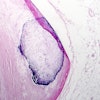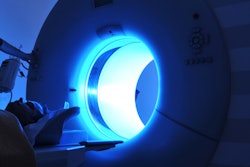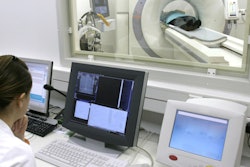
The utilization rate of emergency CT for eye-related injuries has more than doubled over the past decade, according to a study recently published online in the American Journal of Ophthalmology. The trend underscores the need to establish more effective criteria for emergency eye imaging, researchers say.
 Dr. Fasika Woreta.
Dr. Fasika Woreta.The group of ophthalmologists and radiologists, led by Dr. Fasika Woreta of Johns Hopkins Hospital, performed a retrospective analysis examining CT and MRI use for patients presenting to a U.S. hospital emergency department with an eye injury. They discovered that diagnostic imaging rates for these cases increased by 94% over the course of the nine-year study period.
Advanced imaging for emergency eye complaints have increased at a higher rate than the rate of emergency visits, highlighting its overutilization, Woreta told AuntMinnie.com. Woreta is director of the hospital's Wilmer Eye Institute residency program.
"This trend toward leaning on imaging when we're not sure is not only happening in ophthalmology but it's now occurring in medicine in general," she said. "Just because you can get an imaging exam quickly doesn't mean you should always get it done."
More and more imaging
Imaging modalities such as CT and MRI have had an increasingly important role in the diagnosis of neurological eye disorders, but research has yet to show the extent to which they might improve diagnostic yield for nonneurological eye injuries, the authors noted. Nonetheless, Woreta and colleagues recognized a growing tendency among physicians to order imaging exams for many emergency eye conditions, even when there were no neurological indications.
To investigate this trend on a national scale, the researchers obtained data from the National Hospital Ambulatory Medical Care Survey, a survey of emergency department encounters in the U.S. jointly administered by the U.S. Centers for Disease Control and Prevention and the National Center for Health Statistics. The survey included information on nearly 7.4 million patients who presented to a hospital emergency department with an eye complaint between 2007 and 2015 (Am J Ophthalmol, November 12, 2019).
Overall, the usage rate of CT and MRI exams for these patients increased by 94% over the nine-year period, with an average annual growth rate of 1.9%. The increase was greatest for CT use, which increased roughly twofold, at an average annual growth rate of 3.4%. MRI usage rates increased much more sharply than CT at first, but they decreased by the end of the study period.
| Trends in CT, MRI utilization for eye-related emergencies | ||
| 2007 | 2015 | |
| No. of CT exams | 83,060 | 212,773 |
| CT usage rate per 1,000 patients | 11.2 | 22.8 |
| No. MRI exams | 6,850 | 7,242 |
| MRI usage rate per 1,000 patients | 9.3 | 7.8 |
"Many times, when a patient came in with eye trauma, it seemed the treating physician would just order a CT scan reflexively, without considering how this would change based on the indication," Woreta said.
The growing reliance on imaging may be a result of various factors, from clinician concerns over malpractice and patient pressure to better access to high-resolution CT and MRI scanners in recent years, she noted.
Need to establish criteria
Further analysis of the data also revealed that certain patient demographics were associated with greater increases in imaging usage rates: being a woman, older than 40 years, covered by Medicare, and admitted to the hospital.
To be specific, the researchers found that the average increase in annual imaging rates was 3.1% for women but only 0.7% for men. The proportion of patients ages 40 to 64 with an eye-related emergency who underwent imaging reached 32.2% in 2015, compared with 16.8% for patients ages 19 to 40 in the same year.
In some cases, imaging results have little to no influence on guiding the immediate management of eye-related complaints and are likely unnecessary, the authors noted. Overutilization of imaging can expose patients to excess radiation and increase healthcare costs.
Better clinical decision rules to guide imaging for eye emergencies and reduce the uncertainty of medical decision-making need to be developed and implemented, Woreta said. The American College of Radiology has appropriateness criteria recommendations for traumatic and nontraumatic orbital conditions, but more specific criteria geared toward emergency physicians and ophthalmologists are needed.
"Establishing sound criteria for eye-related emergency imaging would be a huge win for the healthcare system and for patients," she said.
The team is currently working on using AgileMD, a tool in Epic, to build a prompt within the electronic medical record system at Johns Hopkins that would require ordering physicians to explain why they are requesting an imaging exam for an eye condition before being allowed to order it.
"As we continue to monitor imaging trends at our institution, we are also promoting awareness of the issue among residents," Woreta said. "I think education and training physicians about appropriate use of CT and MRI and how to really think about clinical indications is important."




















